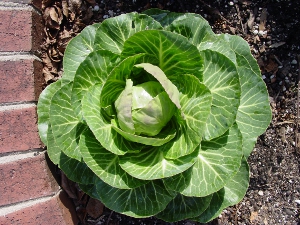Edible Gardening Now at Daniel Stowe Botanical Garden
 Wednesday, October 22, 2014 at 11:23AM
Wednesday, October 22, 2014 at 11:23AM
Whether you’re looking for a memorable place to tie the knot with your soul mate, share a fun learning experience with the family, or simply reflect on life, inspiration can be found in every square inch of the 380 acres at Daniel Stowe Botanical Garden.
Adults and kids alike can expect wonder and discovery around the corner of every meandering trail and pathway. Like a story book fairy tale, elegant gardens, thoughtfully dotted with fountains and artwork refresh the spirit, and a glass conservatory filled with tropical plants and orchids can splash warmth and cheer on even the gloomiest winter days.
Until recently, edible gardening kept a low profile at Daniel Stowe Botanical Garden, reserved to a few perennial herbs worked into existing ornamental garden displays. But like an eager sweet potato vine in August, demand for a more substantial, interactive edible gardening presence grew until the folks at DSBG decided to create something new for guests.


Because the location of their organic garden display is likely to change as the display grows in scale, the first phase of their edible gardening component, which may one day grow to include a compost station, chicken coop and even a greenhouse, consists of a simple arrangement of two 4’x6’ Kitchen Garden raised beds, flanked by a cedar framed sign welcoming visitors to the garden.

The organic garden is located next to a large hedge, and receives direct sunlight from mid morning through early evening. Because of this exposure, ½” drip irrigation line was installed in the beds to ensure that the watering schedule can be adjusted based on the time of year.


Like all of our raised beds, these were made with untreated red cedar lumber and filled with a premium organic soil and amendment blend. While a tidy backyard garden is always easier to enjoy, because this exhibit is on display to the general public, a well maintained appearance is absolutely essential. To ensure that their edible garden display is always an enhancement to the other visual elements of the grounds, we partner with the maintenance team at DSBG to keep the beds looking magnificent, whatever the season.
Edible Garden Display at Daniel Stowe Botanical Garden from Microfarm Organic Gardens on Vimeo.











